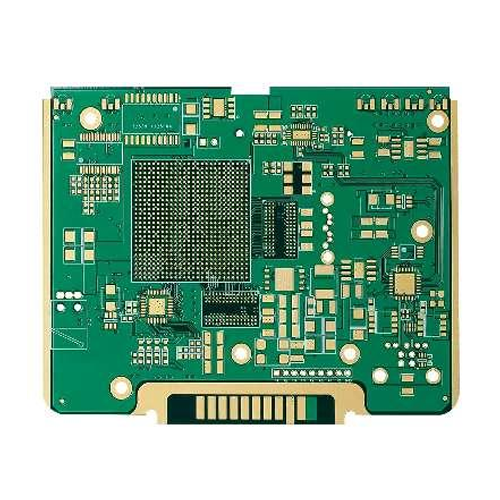| Type | Gold Finger |
| Layers | 16 |
| Thicknes | 3.8 ± 0.30mm |
| Min Drilling | 0.35mm |
| Surface Treatment | ENIG+Hard gold |
| Applications | Connectors |
Home - Case Studies - 16-Layer Gold Finger PCB for High-Reliability Connectors

| Type | Gold Finger |
| Layers | 16 |
| Thicknes | 3.8 ± 0.30mm |
| Min Drilling | 0.35mm |
| Surface Treatment | ENIG+Hard gold |
| Applications | Connectors |
This 16-layer Gold Finger PCB is specifically engineered for high-reliability connector applications that require frequent plugging and unplugging. Featuring a robust ENIG + Hard Gold surface finish, this board ensures long-term durability, excellent conductivity, and mechanical wear resistance.
Key Specifications:
Type: Gold Finger PCB
Layers: 16
Board Thickness: 3.8 ± 0.30 mm
Minimum Drill Size: 0.35 mm
Surface Finish: ENIG + Hard Gold
Application: High-cycle connector interfaces, edge connectors, backplanes
The combination of a multi-layer structure and durable plating makes this board ideal for applications where signal reliability and physical durability are both critical.
To meet the performance and durability expectations of a Gold Finger PCB, the following design and manufacturing specifications were implemented:
Plating Requirements: 30–50 μin hard gold over nickel for the edge connectors, ensuring high wear resistance
Surface Finish: ENIG (Electroless Nickel Immersion Gold) on solderable areas for excellent solderability
Drill Precision: 0.35 mm mechanical drilling for dense component mounting
Layer Stack-up: 16-layer design optimized for power and signal integrity
Edge Chamfering: Required for smooth card-edge insertion into connectors
Thickness Control: Maintained at 3.8 ± 0.30 mm to ensure compatibility with mechanical interfaces
Compliance: IPC Class 2 or 3, depending on application requirements
Q1: What is a Gold Finger PCB and where is it used?
A: A Gold Finger PCB features gold-plated edge connectors designed for high-insertion-cycle environments such as memory modules, PCIe cards, or industrial connectors.
Q2: Why combine ENIG with Hard Gold plating?
A: ENIG is used for solder pads due to its flatness and solderability, while Hard Gold (electroplated) is used on edge connectors for its excellent wear resistance and conductivity.
Q3: How many insertion cycles can the gold fingers withstand?
A: With proper hard gold plating (typically 30–50 μin), the gold fingers can withstand 500–1000+ insertion cycles without significant wear.
Q4: Can Fastturn PCBs customize the chamfer angle for edge connectors?
A: Yes. We support custom chamfering and beveling angles based on customer specifications to ensure smooth connector mating.
Q5: What quality standards do you follow for Gold Finger PCBs?
A: We manufacture Gold Finger PCBs in compliance with IPC Class 2 and Class 3 standards, depending on customer requirements and reliability needs.